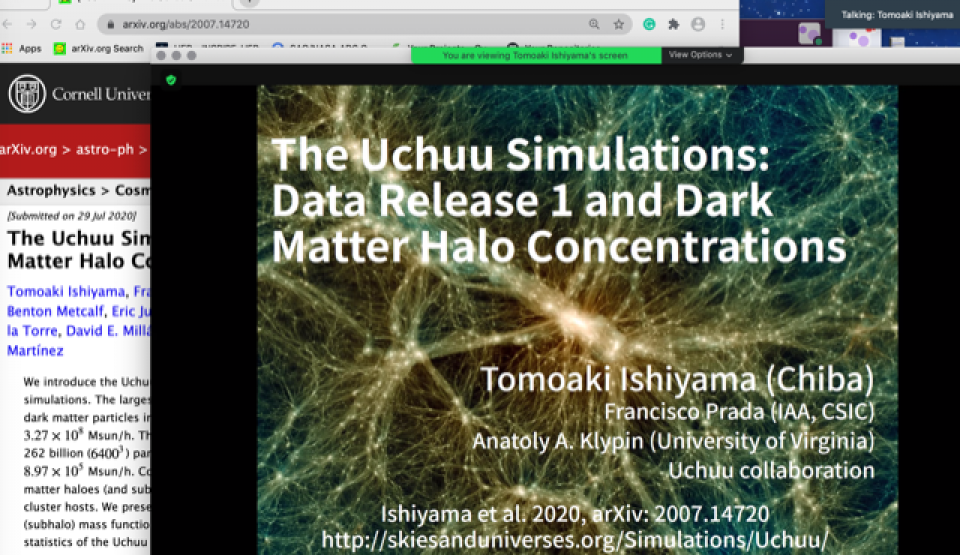DMWG seminar by Dr. Ishiyama: a spectacular cosmological N-body simulation
Visible components of our Universe, such as galaxies, show hierarchical structures. Such structures are always embedded in DM structures called "halos". In the early Universe, there exist small density fluctuations that eventually collapse to halos at some points by their self-gravity. Then, halos grow to form larger structures again by self-gravity and this is the origin of the structure of the current Universe. The large-scale structure of halos as well as their inner structures contain information about the nature of the DM particle.
Cosmological N-body simulation is a powerful computational method to follow that structure formation, by solving multi-body problems numerically. A halo, which is a clump of elementary DM particles, is treated as one smooth particle in N-body simulation. Its prediction power is so strong that the calculation corresponding to the upcoming cosmological survey, for example, has long been awaited. However, its computational costs scale as the square of the particle number N (or N log N when some reduction methods are adopted) and it is almost impossible to cover everything we need.
There are two strategies in the calculation: simulating a large volume with large particle mass, or a small volume with small particle mass. The former is suitable for studies that deal with the large-scale structure while the latter has advantages in studying the properties of each halo. His group has conducted a large high-resolution simulation project which enables us to study both of them. The Uchuu simulation, which uses the cubic of 12800 particles in a 2 Gpc-scale simulation box, enables us to study large-scale structures. The Shin-Uchuu simulation in the same project, which uses the cubic of 6400 particles in a 140 Mpc-scale box, is provided aiming to study the inner structure of DM halos. Analyzing the simulated structure and halo properties, the matter power spectrum covering from the largest to the non-linear regime is obtained. Also, the so-called mass-concentration relation in a wide halo mass range is now available thanks to the project. There is another good news for DM hunters: the results of the simulation are open to the public. This should boost the DM study from many aspects!

